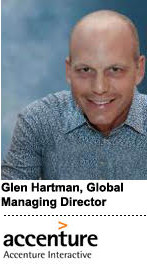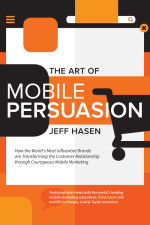Dear Friends,
Summer has arrived and we are seeing temperatures rising including record heat waves nationwide.
We are also seeing rapid changes in hiring priorities as 50% of today’s workforce tasks are forecasted to become obsolete within the next few years based upon the impacts of artificial intelligence, machine learning, and other technology innovations.
The impact of these disruptive changes, including proactive strategies for addressing these impacts, are highlighted in this month’s excellent article, “Hiring Priorities Are Changing,” written by Darcy Bevelacqua, Managing Director, Analytics, CX & MarTech.
Pls. schedule a call with EC to review your second half talent acquisition priorities so you can stay ahead of the curve.
Best,
Jeff Gundersen
Hiring Priorities Are Changing
by Darcy Bevelacqua, Managing Director – Analytics, CX, & MarTech
In this new age of disruption driven by artificial intelligence and machine learning, 50% of the tasks performed by today’s full-time workforce will become obsolete within the next few years.
According to McKinsey, the evolution of business will cause massive organization changes in the next few years. This will have an impact on what skills you will need to hire, the rate of change, diversity of the workforce and the importance of a strong culture that enables agile development and emphasis on continuous learning and testing rather than success and failure.
In order to keep up keep up it’s time to start planning for your future now.
Here are some ideas on how to get started to building a better future.
- Hiring new skills
- Investing in marketing operations and technology
- Building a culture of continuous learning & innovation
- Thinking holistically and working across internal silos and becoming agile
- Building a bigger ecosystem and including “frenemies”
Hiring New Skills
As competition intensifies, there is a need to hire new skills. Most companies are already reconsidering and upgrading their skills in analytics, design and technology. In order to create the future customer experiences you need, these new skills are required investments. There will also be a need to think about integrating these new skills within the marketing team.
We are seeing more emphasis on new roles in media that combine audience targeting with analytics and ROI. Since more than 50% of the media dollars in most organizations are going toward on line, audience targeting is becoming more important and there is more emphasis on using analytics to track the MROI (marketing return on investment).
Companies are putting more emphasis on machine learning, AI and other advanced analytic modeling capabilities. Talent is hard to find and unless there is a clear career path it is hard to keep the advanced analytics talent interested over the long run.
There is a need to new type of talent we call “Whole Mind.” These are folks are comfortable with analytics and process but can also work with the creative and content people. These are the people who are able to integrate different departments and enable them to work together more successfully.
Investing in Marketing Operations and Technology
CMO’s now have a bigger technology budget than the Technology department. Learning how to work with IT has become a critical path to success for both departments.
The CMO is now accountable for growth and this is not possible without a robust technology infrastructure. The technology stack includes online advertising (DSP, DMP etc.), content management (DAM), CMS), campaign planning(CRM), workflow management (MRM), , identity management,(CDP), Analytics Testing, Reporting (BI), etc. Gartner’s CMO Spend Survey 2018-2019 found marketing technology (MarTech) accounts for the biggest slice of the marketing spend budget — 29%. Meanwhile, only 24% goes to labor. Maybe it’s time for organizations to invest more resources into “MarTalent” rather than MarTech?
Most CMOs report challenges with integrating these systems, gaining insights from their data because the data is siloed and hard to access, and in data governance (because there are no standards on how the data will be kept up to date). Working hand in hand with operations and tech will help the CMO make the right choices for which tech platforms, what cloud services, etc. should be put in place.
Building the right marketing operations teams will be important to working across the organization to facilitate a holistic customer view, tracking marketing effectiveness, and ensuring a consistent customer experience.
Building a Culture of Continuous Learning
Marketing has been evolving quickly, with more communications channels, higher customer expectations and increasing competition. In order to keep up and gain a competitive advantage it will be important to provide your team with new skills on an ongoing basis.
There are several ways to accomplish this goal. First you can identify the key industry conferences where new learning can take place. If you send your staff be sure they come back and hold sessions with the team on what they learned.
You can provide on-site or on-line training for new skills. Many of the professional organizations offer these types of programs, but don’t be afraid to use tools like Coursera and LinkedIn. If you find classes you think are superior, you can put your own company curriculum in place and recommend these classes to others.
It’s important to included time and money for continuous learning into your career planning. It’s also important to give people recognition for their accomplishments and to have them share their learning with others. The emphasis on continuous learning has to come from management. Practice what you preach and share with your team.
Have your employees provide feedback on the training they receive so you know which course are great and which ones are not worth taking. Also monitor what your employees say on social media about training to be sure they are getting value.
Thinking holistically and working across internal silos and becoming agile
Most marketing organizations are grouped by communications channels and functions, each run by different marketing executives, with different metrics and KPIs. In order for the CMO to build an organization that is customer focused rather than function focused, it is necessary to change the organizational structure, and to change the way the teams get compensated.
This is a different way of operating and it will take some time to make this transition. You can begin by working with ad hoc teams that are cross functional to solve specific business challenges. You can also create some centers of excellence that combine functions together. Either way the culture needs to reinforce the value of teams working together. Put leaders in charge who have the skills to work across the silos, appreciate the creative and the analytical skillsets, and are strong communicators who can provide the vision and reinforcement for the teams as they move forward. It is impossible to create better customer experiences without internal cooperation of many departments.
We want to work in an agile way but learning how to do this is a new skill. Instead of assuming that everyone will adapt to agile -provide training and reinforce the new work methods to help your teams get comfortable with this way of working.
Building a bigger eco system and including “frenemies”
Last, but not least, is to think about how your will be able to grow your organization’s bottom line. Most likely this will be a combination of product extensions, and partnerships.
You probably have a “new product” development team. However, new products can’t be developed in a vacuum. In order for them to be successful, they need input from sales, customer service and customers to be sure what they develop is what your customer’s actually want. Too many organizations have product innovation that is led by engineers without a clear understanding of customer needs. Product success requires internal collaboration and a clear understanding of the customer and the competitive landscape to be successful.
In addition to product development, you want to think about which partners in the ecosystem you should work with to build new solutions. This is harder than it seems. You need people with an outside perspective of the marketplace, and knowledge of the various players to help you find the right partners that you will be able to work with successfully.
Conclusion
We live in exciting times! Preparing your organization to become agile and more customer-centric is critical to your long-term success. You should review and reconsider your approach to :
- Organizational Design
- Compensation and career paths
- Training and retraining your workforce
- Creating a culture of collaboration and experimentation
- Hiring new skills to help you reach your objectives
Please contact Executive Connections LLC (www.executiveconnectionsllc.com) for help. We would love to work with you to help your company grow. With high market demand favoring candidates with skills in Analytics, CX, MarTech, etc. – it is advisable to retain an experienced, well-regarded executive search firm partner to help find the right talent, shorten recruiting timetables, and assist in candidate transition support coaching/consulting.









